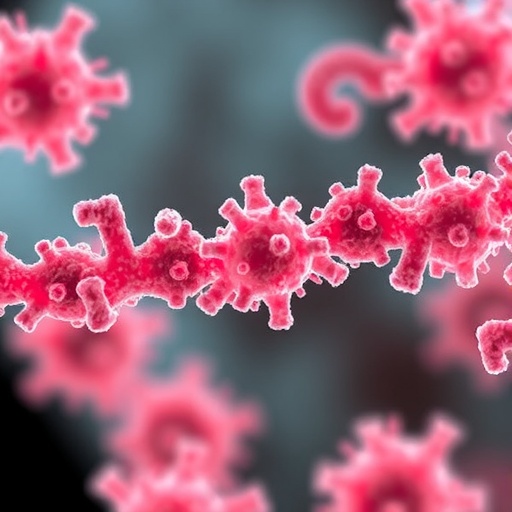In the early 2000s, researchers made a remarkable discovery that would revolutionize our understanding of genetic editing and cellular immunity. They uncovered a mechanism by which bacteria utilize a sophisticated system to defend themselves against viral invaders known as phages. This groundbreaking system, termed CRISPR—an acronym for Clustered Regularly Interspaced Short Palindromic Repeats—provides bacteria a way to store fragments of viral DNA as a form of memory. This stored information enables bacteria to recognize and combat viral threats, much like a learned immune response. Such insights into bacterial defense systems have significantly influenced diverse fields, ranging from biotechnology to medicine.
The most extensively studied variant of this system is CRISPR-Cas9. In this robust mechanism, bacteria can capitalize on their genetic memories by transcribing the stored viral DNA into RNA sequences. These RNA sequences serve as guides to direct the Cas9 protein, a molecular scalpel that locates and cuts the DNA of invading phages during subsequent infections. The cutting process initiated by Cas9 requires a short DNA sequence known as the Protospacer Adjacent Motif, or PAM, acting as a recognition signal for the protein to locate the site to make its incision. The implications of these findings have widespread applications, notably in gene editing, where CRISPR is utilized to modify various organisms, including plants, animals, and human cells, thereby opening new avenues for gene therapies and treatments.
Despite the progress made with CRISPR-Cas9, critical questions remained concerning how bacteria generate these essential immune memories. Understanding the intricate process of memory acquisition within the CRISPR system constitutes a key challenge for scientists. Recently, efforts from a research group under the guidance of Dr. Yan Zhang at the University of Michigan have shed light on this enigma, particularly focusing on redefining the role of Cas9 when it operates in its unbound or “empty” state, referred to as apoCas9. This research brings forth an intriguing paradigm shift in our understanding of CRISPR-Cas9.
Previous investigations had primarily concentrated on the Type II-A systems of bacteria like Streptococcus pyogenes and Streptococcus thermophilus. These studies elucidated how Cas9 collaborates with its RNA partners, particularly tracrRNA, to effectively facilitate memory acquisition. However, the Type II-C systems, which encompass more than 40% of Cas9 variants, remained less understood until Zhang’s team embarked on their innovative study using Neisseria meningitidis, a bacterium associated with potential meningitis infections. This team aimed to scrutinize whether the bacterium could develop new immune memories, exploring various manipulations to its systemic machinery.
The initial hypothesis revolved around the assumption that Cas9 requires its RNA partners to facilitate memory formation. Nonetheless, findings from this research group brought unexpected results. Utilizing advanced sequencing technologies, the team observed that, following phage infections, Cas9 demonstrated a significant capacity to acquire new spacer sequences that encode memories of these viral encounters. Most strikingly, upon deleting the tracrRNA gene—part of the conventional understanding of RNA’s role—the team observed a marked increase in the acquisition of spacer sequences, highlighting an unanticipated mechanism within the CRISPR framework.
Upon restoration of tracrRNA, however, the increased rate of memory acquisition retracted to baseline levels, suggesting a regulatory effect emanating from this RNA component. Additionally, further analysis involving crRNA yielded similar results. The absence of crRNA led to dramatic enhancements in memory acquisition, while reintroducing this RNA resulted in a decrease in such activity. This paradox between the traditionally recognized role of RNA and the new evidence supporting apoCas9 as a functional entity underscores a potentially profound aspect of CRISPR systems.
The implications of this revelation extend to the understanding of how bacterial immune systems dynamically adjust. When the levels of CRISPR RNA are low—which suggests an impoverished memory landscape—apoCas9 can escape the constraints imposed by its RNA partners. In this “freed” state, apoCas9 can significantly boost the acquisition of new spacers, enhancing the bacteria’s ability to protect itself amid potential phage assaults. This research suggests a robust mechanism by which bacterial organisms ensure the resilience of their immune memory banks, promoting adaptability in ever-evolving environments rife with viral threats.
The study also delineated three scenarios wherein bacteria might experience abbreviated CRISPR arrays, leading to diminished immune memories. The first scenario involves nascent CRISPR arrays that are newly formed and have yet to accumulate sufficient spacer content. In such instances, Cas9 would predominantly exist in its apo form, actively seeking to stabilize the array by acquiring new spacer sequences. The second and third scenarios involve more complex dynamics, where existing CRISPR arrays collapse into shorter forms. Both phenomena can either be a mechanism for shedding undesirable or harmful memories—a bid to acquire new traits—or a consequence of homologous recombination that erases memories inadvertently during genetic exchanges.
By expanding the known functions of Cas9 and elucidating the mechanisms underlying memory acquisition, this study represents a monumental advance in molecular genetics. It bridges existing knowledge gaps and enhances our comprehension of CRISPR-Cas9 systems, offering insight into the dynamic equilibrium bacteria maintain within their immune memory. Such understanding can catalyze the development of improved gene editing technologies, molecular recording systems, and pioneering applications in precision medicine.
As the research progresses, the ability to manipulate cellular mechanisms such as memory acquisition could lead to groundbreaking innovations in various fields. The new findings position researchers to establish bespoke CRISPR-based tools that cater to specific needs—whether in medical research, genetic profiling, or biotechnological advancements. The CRISPR-Cas9 system continues to evolve, showcasing nature’s ingenuity in the face of biological challenges posed by microbial adversaries.
With this revelation about the innate flexibility of Cas9’s function, the scientific community is presented with a vital opportunity to redefine approaches toward gene editing and genetic memory management. Further investigation into these mechanisms will undoubtedly yield additional insights and technologies, underscoring the remarkable potential of CRISPR systems to transform life sciences fundamentally.
Subject of Research: Memory Acquisition in the CRISPR-Cas9 System
Article Title: Cas9 senses CRISPR RNA abundance to regulate CRISPR spacer acquisition
News Publication Date: [Insert Date]
Web References: [Insert References]
References: [Insert References]
Image Credits: [Insert Credits]




